
views
Reacting to Misinformation

Pause before you share or reply. Misinformation can be really emotionally triggering, and you might see posts that make you feel mad, sad, or frightened. News and social media sites make it super easy to share posts and articles—all you have to do is click a button. Even if you have a strong reaction to something you see online, slow down and take some time to analyze the content before you share it or respond.

Fact-check the information. Misinformation is often designed to look appealing and accurate, so it can be tempting to trust the content you see in a high-quality graphic or post. That makes it especially important to fact-check the info. Look into the source and the website, the author and their credentials, and check the publication date. Check for proper context and explanations before sharing posts or videos You can also cross-reference the content on a fact-checking website, like the ones listed here: https://reporterslab.org/fact-checking/#
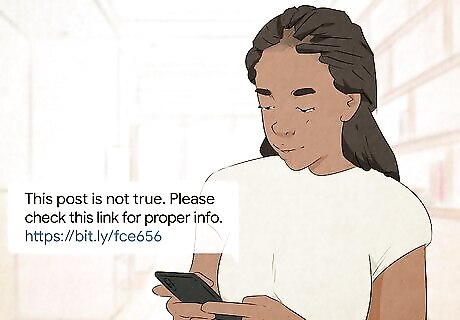
Let others know if posts or articles contain misinformation. If you see an upsetting post, then dig into the claims and find out they're not accurate, speak up. Comment or reply with a kind, polite message that explains what's false about the content. Add a few links to solid sources that debunk the information so others can get the facts. Avoid sharing any posts with misinformation. People often miss the qualifying information and take the article title, graphic, or meme as fact. Many social media sites also let you report posts that contain misinformation or fake news.
Ways to Reply

Craft an informed reply if you think you can make a positive change. Some posts, however upsetting, come from a place of genuine ignorance. If that’s the case, you can write a response that clarifies and rebuts the claims being presented. Don’t feel like you have to fight every battle—if you feel like there are more effective ways to make a difference than potentially inviting an online fight, it’s okay to pursue those instead. A well-researched and well-sourced reply is a great option if you’re responding to someone making unfounded claims, like supporting a conspiracy theory.
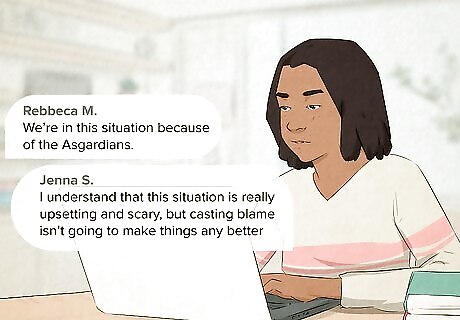
Write an empathetic reply so the poster feels heard. It can be hard to set your own biases and emotions aside when you see a really upsetting post online. If you feel up to it, try being the bigger person and really listening to what the poster has to say. Even if their content is worded in a harmful way, they may simply be feeling scared and lashing out online. Write out a response that addresses those negative feelings instead of the post itself. For example, if a person's post is based on a stereotype, give yourself a moment to break down the emotions of the original poster. For instance, you can say something like: “I understand that this situation is really upsetting and scary, but casting blame isn’t going to make things any better.”
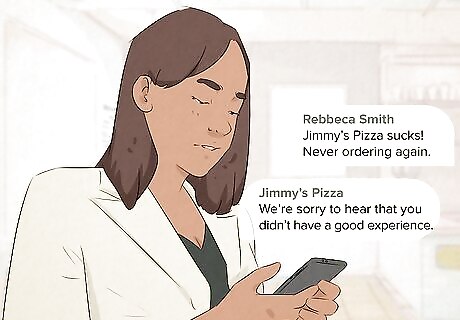
Take the high road if you’re replying as an organization. Social media can be a tough balancing act, especially if you’re representing an organization or brand. Since you’re usually dealing with customers, make an effort to respond to as many comments and questions as you can, even if they’re negative. If an individual is obviously belligerent and rude, don’t waste too much of your time and energy. If you choose to engage with angry customers, do your best to be mature and take the high ground. For instance, if a customer uses a lot of expletives in their response say something like: “We’re sorry to hear that you didn’t have a good experience.”
When Not to Reply

Avoid responding if you can’t convince anyone. It can be really tempting to dive into a debate, but online arguments aren’t usually worth the time or stress that they cause. Instead, think about your own mental health and whether or not your efforts will be worth it. While some online arguments may be worthwhile, many are not. Choose whichever option is best for you in the long run. For instance, you might choose to engage if a family member shares a bogus science article on their Facebook wall. If a troll is obviously trying to bait you with harsh wording, it’s probably best to take a step back.

Skip over the post if you don’t think it’s worth your time. Your time is just as important as the person who shared or wrote out the upsetting post. More often than not, interacting with inflammatory content simply isn’t worth your time and energy. There’s nothing wrong with taking a step back and logging off the day.

Instead of replying, vent by drafting a message. It’s perfectly valid and normal to be upset by the things you see online, whether you’re dealing with someone you know or a complete stranger. Write out your initial thoughts, then take a step back. Give yourself some time to cool down, then read over your message again. You may find that you feel better just by writing out the message. You can also check with a friend or family member you trust to see if the message is worth sending, or if you’re better off leaving the situation alone. You can use the acronyms SPACE and THINK as you mull over your options. SPACE stands for Stop, Pause, Assess, Confirm, and Execute, which can help you sort out your thoughts and feelings in a healthy way. The THINK acronym consists of a few questions that help you determine whether your reply is worth sending or not. Consider whether your response is True, Hurtful, Illegal, Necessary, and Kind before sending it.
Editing Your Online Feeds
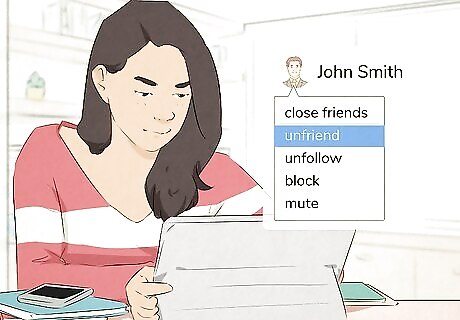
Unfriend or block people who are having a negative impact on your mental health. You don’t have any obligation to stay connected online with people who cause you any kind of stress and anguish. The “unfriend,” “unfollow,” and “block” features exist for a reason, so don’t be afraid to use them. It’s a good idea to unfriend and block people who intentionally post upsetting content with willful ignorance.
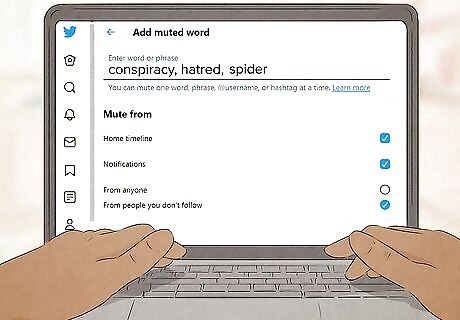
Mute words or phrases that upset you. Some platforms, like Twitter, give you the option to “mute,” or blacklist, certain phrases that come up on your feed. This process can be a bit time-consuming, as you need to input every version of the word that you’re trying to block. If you feel up to the task, this may help limit the number of upsetting posts you see online, so you won’t have as much upsetting content to even react to.
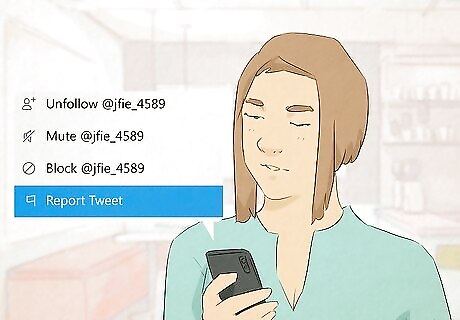
Report the post or poster if it’s actively harmful. While some online content is just annoying and ignorant, other content is downright harmful and threatening. Hold people online accountable for their actions by reporting any harmful content you see online, whether it’s on Facebook, Twitter, or Instagram.

Talk to a loved one about how you’re feeling. It’s okay to feel really upset or angry about something you see online. Sit down with a friend or family member and let them know how the content made you feel. You’ll probably feel a lot better after venting your feelings. Your friends and family may also agree with you, which can give you a real sense of comfort. In-person and kind conversations about current events are much better than hostile online ones.



















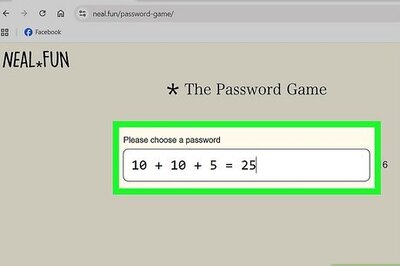
Comments
0 comment